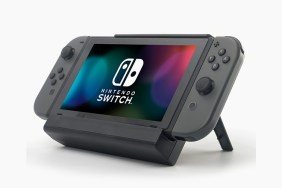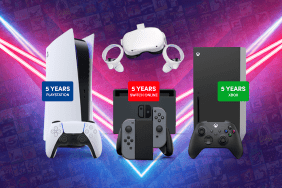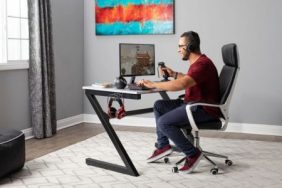Less than a month following its launch and the Nintendo Switch is already shaping up to be the best console I’ve owned. This may sound like hyperbole, and Nintendo still has a lot to do if the company wants it to enjoy a dramatically more favorable legacy than the Wii U, but in terms of hardware no console compares to the amount of versatility the Switch offers straight out of the box.
The more time I spend with the Switch, the more that I believe it has every chance of being looked back upon as the (belated) best console of this generation. Here’s why it’s bowled me over:
A premium gadget

Though the Switch was launched less than five years after the Wii U and the two consoles share a similar ethos, they couldn’t be further apart in terms of their execution. The Wii U’s Gamepad was an unsightly beast of a controller, with its sub-HD screen slapped onto a bulky, plastic frame that made its pro controller a must-have purchase for many. The Joy-Cons snapped into the bundled grip make for a much better controller by comparison, while the Switch becomes one of the most impressive handheld gaming experiences available when used in portable mode.
Also: 10 Characters That Make Street Fighter Special
I’ve seen some comparing it to Nvidia’s Shield tablets, and undermining its value by suggesting that it is an overpriced alternative. While this is technically true — the system does boast similar specs to these devices — it significantly downplays the console’s unique selling points that make it such a unique proposition in the gaming hardware market. While the PS4 and Xbox One are the technically superior consoles, there’s something to be said for just how satisfying a gadget the Switch is. Hearing that familiar “click” when snapping the Joy-Cons onto the side of the display is an aural treat, while the ease in which the console switches from portable to TV mode makes it infinitely less fiddly than its predecessor.
Though they both have their great libraries of games, the PS4 and the Xbox One are essentially just another couple of home consoles. Though they’re more powerful than the Switch, they’re only as good as the games that they run, and they aren’t much fun straight out of the box. On the other hand, the Switch’s versatility leaves room for a wide variety of great uses for it in the future, and as more games and apps are released for the console it’s not difficult to see it becoming one of Nintendo’s most popular consoles yet.
Home console games on the go

Prior to the Switch’s launch I never really considered just how much use I’d get out of it as a portable console. As someone who much prefers to play games hooked up to a big screen while lying back on my sofa, I naturally assumed that my Switch would remain perennially docked, occasionally being removed from its holster on lengthy journeys where my smartphone or 3DS wouldn’t provide enough of a distraction. I was wrong.
So far I have made more use of the Switch’s portable mode than anything else, and playing games designed for a home console while on the move is much more appealing than I’d previously imagined it would be. If I’m ready to turn in for the night but still want to play thirty more minutes of Breath of the Wild, I can remove the Switch from its dock and take it upstairs with me, then continue with my adventure as soon as I wake up in the morning. This is what Nintendo intended the Wii U’s Gamepad to be used for, but with the Switch’s large, crisp 720p display, portable mode isn’t a compromise this time around.
A local multiplayer machine

Nintendo remains one of very few video game companies to truly value local multiplayer, and this has been the determining factor in me picking up its past three consoles at launch. The Wii was a no-brainer for someone who wanted to play games alongside their friends and family in the same room, and though the Wii U struggled in this department, the console’s underrated mini-game collection Nintendo Land was inveigling enough for me to (wrongly) assume that the company was going to strike gold twice.
The Switch is yet to receive its first great local multiplayer game, but the console is built from the ground up for couch co-op and going toe-to-toe with your friends in your living room. The miniature Joy-Cons work surprisingly well as individual controllers for 2-player action, and 1-2 Switch has also shown that they feel a lot less cumbersome to hold than the Wiimote when they’re used as an extension of the player’s arm in a motion controlled game. Then there’s its portable display, which can also be used in multiplayer by virtue of its little kickstand (which is unforgivably not placed in the center of the console leading to balance issues, but we’ll overlook that for now), and will let you play Snipperclips with a buddy anywhere you like.
Much of the Wii’s success can be attributed to its focus upon local multiplayer, something that was unfortunately lost with the Wii U. However, the Switch has seen Nintendo return to this well once again, not only providing the same motion controlled capabilities that helped its games appeal to brand new generations of players, but also providing new ways to play for everyone else, too.








